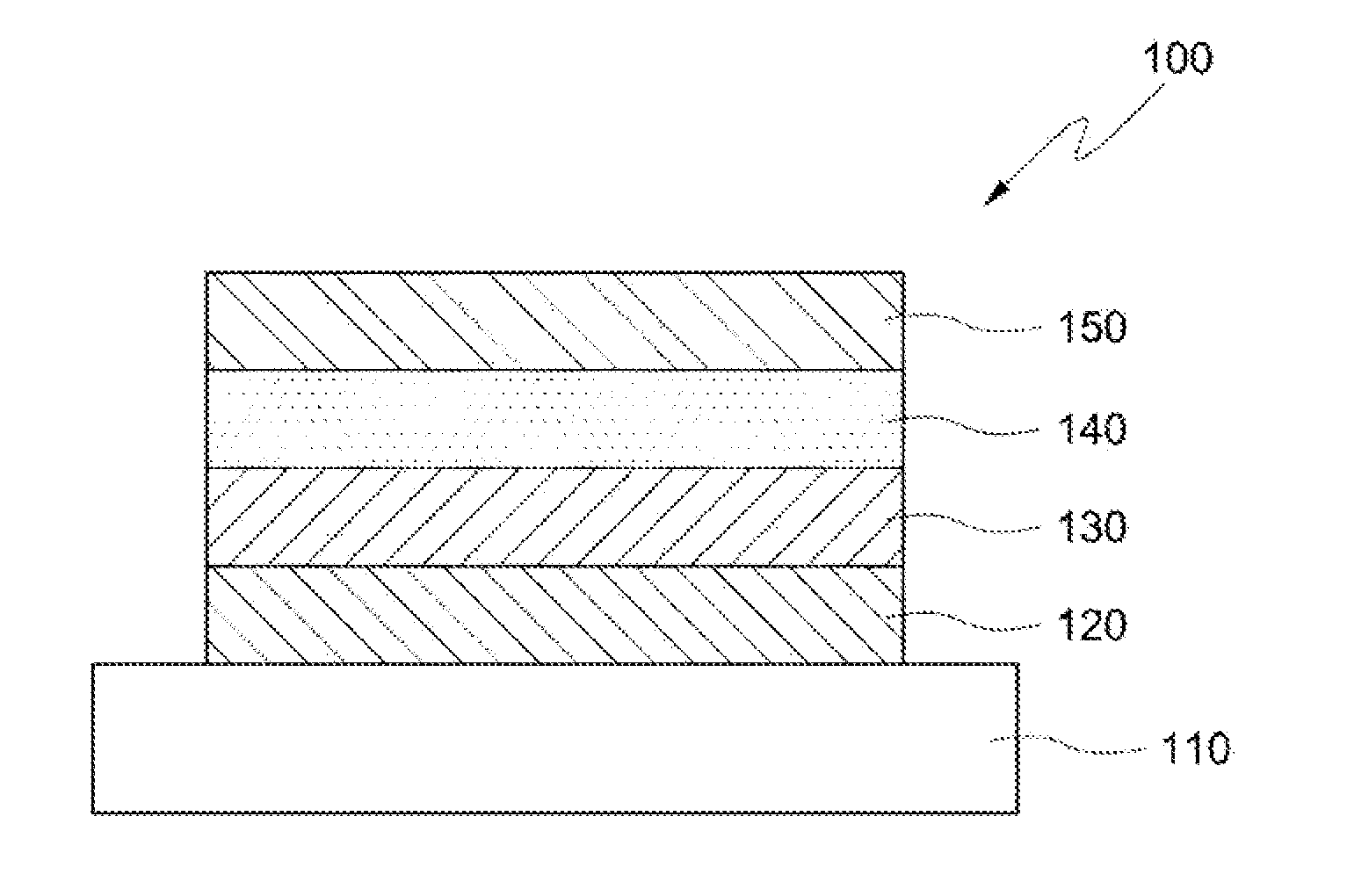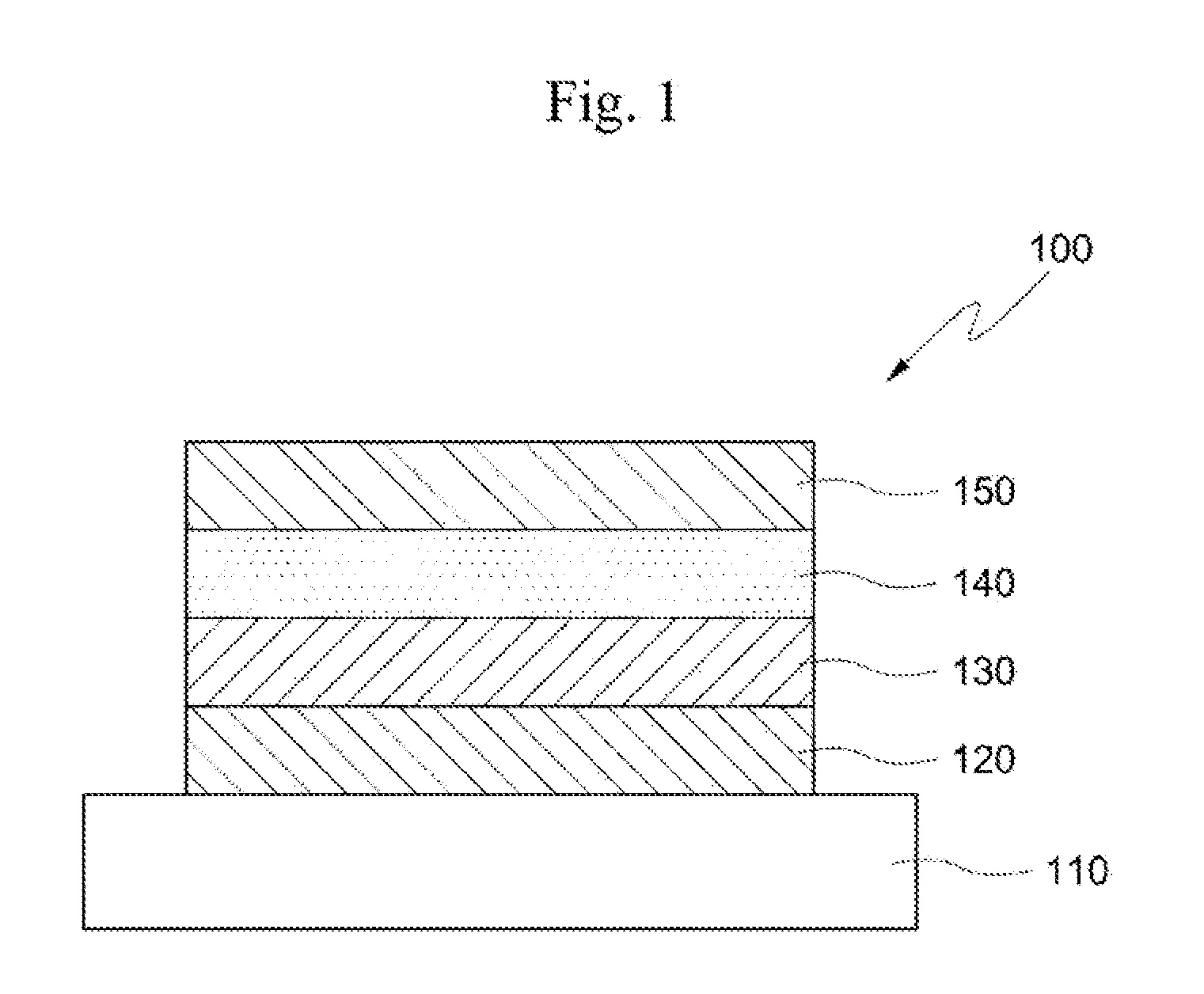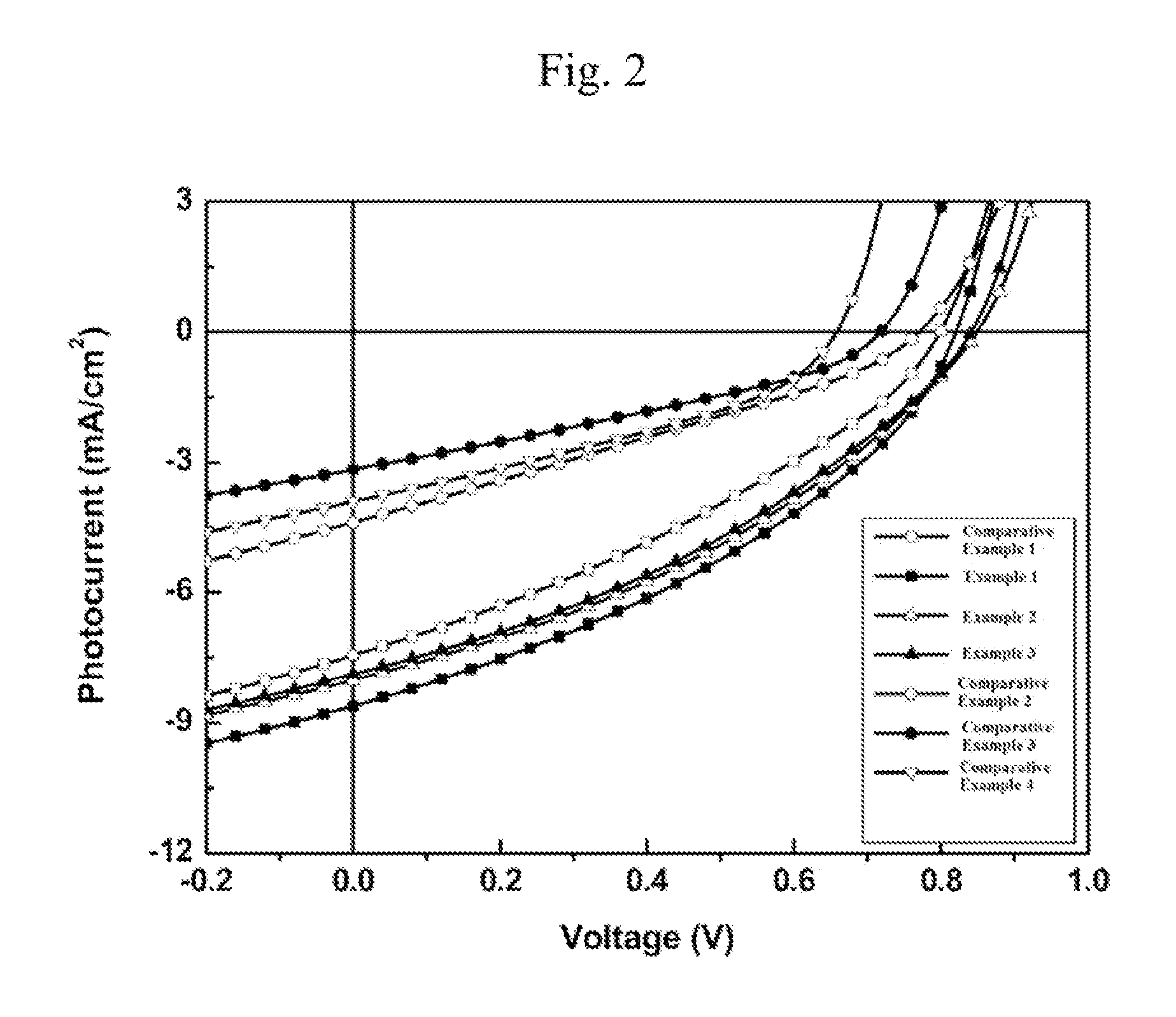Conductive polymer containing carbazole, and organic photovoltaic device using same
a technology of conductive polymer and carbazole, which is applied in the direction of solid-state devices, semiconductor devices, thermoelectric devices, etc., can solve the problem of large amount of photons to be absorbed, and achieve the effect of improving photon absorption ability and hole mobility
- Summary
- Abstract
- Description
- Claims
- Application Information
AI Technical Summary
Benefits of technology
Problems solved by technology
Method used
Image
Examples
example 1
Synthesis of Polymer-2
[0061]0.300 g (0.429 mmol) of 2,7-bis(4′,4′,5′,5′-tetramethyl-1′,3′,2′-dioxaborolan-2′-yl)-9,9-didecylfluorene, 0.187 g (0.409 mmol) of 4,7-di-2′-(5′-bromo)-thienyl-2,1,3-benzothiadiazole, and 0.0106 g (0.0215 mmol) of N-dodecyl-2,7-dibromocarbazole were charged into a reaction flask and maintained in a vacuum for 1 hour, after which 7 ml of toluene was added thereto, and the mixture was stirred for 30 minutes. After 1.5 ml of ethanol and 1.5 ml of 20 wt % Et4NOH have been added thereto, the solution was bubbled with nitrogen to remove oxygen dissolved in the solvent. Then, 2.9 mg (0.0129 mmol) of Pd(OAc)2 and 10.8 mg (0.0386 mmol) of tricyclohexylphosphine were added, and the mixture was refluxed in a nitrogen atmosphere for 2 days while the temperature of the external oil bath was maintained at 120° C. 0.05 g of phenylboronic acid was added thereto and allowed to react for 3 hours, and then 0.12 g of bromobenzene was added and allowed to react for 4 hours. Th...
example 2
Synthesis of Polymer-3
[0062]The procedure of Example 1 was repeated, except that 0.300 g (0.429 mmol) of 2,7-bis(4′,4′,5′,5′-tetramethyl-1′,3′,2′-dioxaborolan-2′-yl)-9,9-didecylfluorene, 0.177 g (0.386 mmol) of 4,7-di-2′-(5′-bromo)-thienyl-2,1,3-benzothiazole, and 0.0212 g (0.0429 mmol) of N-dodecyl-2,7-dibromocarbazole were charged into a reaction flask and maintained in a vacuum for 1 hour, after which 7 ml of toluene was added thereto and the mixture was stirred for 30 minutes, thereby obtaining 200 mg of a polymer [Mw=6,796 g / mol (PDI=2.0)].
example 3
Synthesis of Polymer-4
[0063]The procedure of Example 1 was repeated, except that 0.400 g (0.573 mmol) of 2,7-bis(4′,4′,5′,5′-tetramethyl-1′,3′,2′-dioxaborolan-2′-yl)-9,9-didecylfluorene, 0.210 g (0.458 mmol) of 4,7-di-2′-(5′-bromo)-thienyl-2,1,3-benzothiazole, and 0.0106 g (0.0215 mmol) of N-dodecyl-2,7-dibromocarbazole were charged into a reaction flask and maintained in a vacuum for 1 hour, after which 8 ml of toluene was added thereto and the mixture was stirred for 30 minutes, thereby obtaining 200 mg of a polymer [Mw=5,125 g / mol (PDI=2.0)].
PUM
| Property | Measurement | Unit |
|---|---|---|
| Short-circuit current | aaaaa | aaaaa |
| Short-circuit current | aaaaa | aaaaa |
| Short-circuit current | aaaaa | aaaaa |
Abstract
Description
Claims
Application Information
 Login to View More
Login to View More - R&D
- Intellectual Property
- Life Sciences
- Materials
- Tech Scout
- Unparalleled Data Quality
- Higher Quality Content
- 60% Fewer Hallucinations
Browse by: Latest US Patents, China's latest patents, Technical Efficacy Thesaurus, Application Domain, Technology Topic, Popular Technical Reports.
© 2025 PatSnap. All rights reserved.Legal|Privacy policy|Modern Slavery Act Transparency Statement|Sitemap|About US| Contact US: help@patsnap.com



